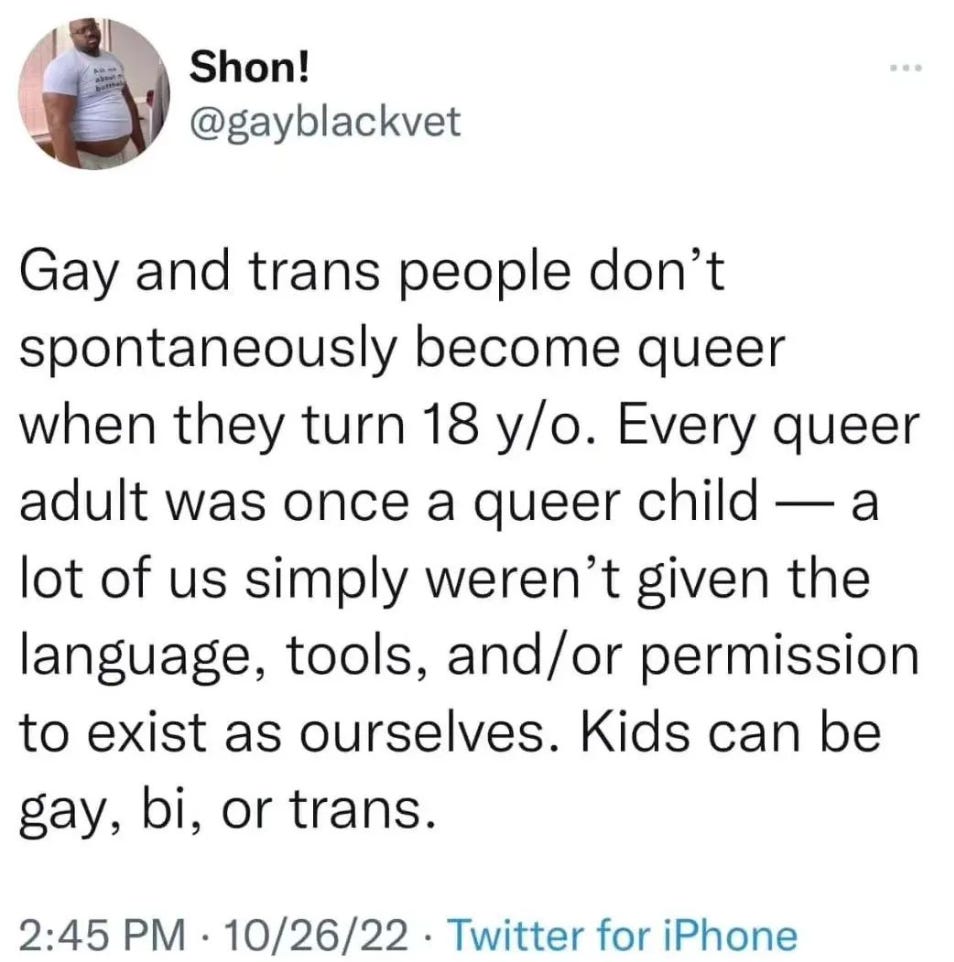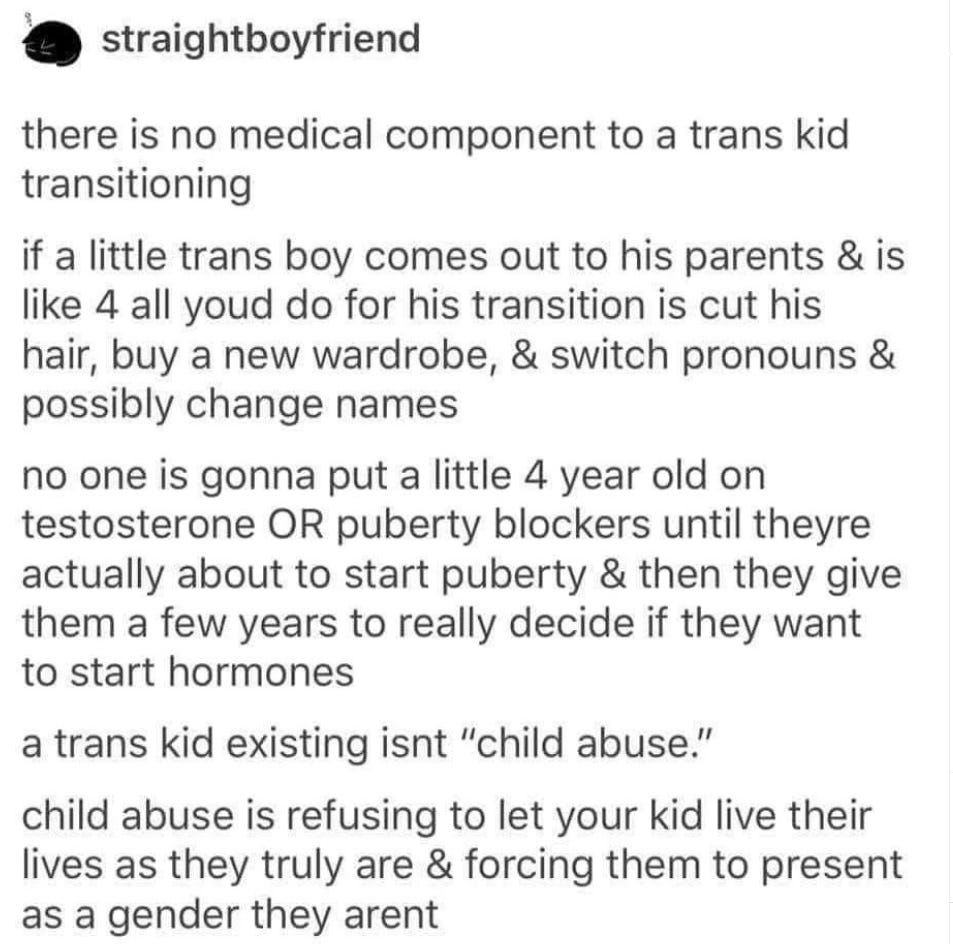Trans 101: Part 4
Part 4 of 11: How Transitioning Works for Trans & Non-Binary Children (1-3% of all kids)
(Here are links to parts 1, 2, and 3)
For children and preadolescents, gender transition is a social process (and sometimes a legal process as well, involving legally changing their name and gender on official documents, if a family chooses to do so at this stage). This means that - if a parent realizes that their child insistently, persistently, and consistently* maintains their stance on their gender identity over several weeks and/or months - parents will make simple adjustments for their child to accommodate their gender identity.
This may look like calling them by a name and the pronouns that align with their gender identity, providing clothes that feel good for their child, and informing their family, friends, and their child’s teachers about these changes and asking for support and compliance.
The point of social transitioning during childhood is that it is flexible. When parents provide safe spaces for gender exploration it allows children to understand, accept, and express their authentic gender self. Social transition can be part of their exploration, and when parents hold a safe space for exploration, they communicate to their child that they will be loved and supported in whatever their gender is and however they express it. When children are supported, they can feel safe to move among different gender expressions until they find what is right for them. This might be a binary, a non-binary, or a gender fluid identity.
One main way that parents can know that social transitioning is effective for their child is by looking at their child’s psychological well-being. When children who are persistent, insistent, and consistent about their trans identities are supported in socially transitioning, their feelings of distress and anxiety typically improve. If a social transition were not in line with a child's gender identity, a positive change in psychological well-being would not be expected. (Note: this may not be as accurate a guideline if a child is in a class, school, and community where they are not supported).
Children who are insistent, persistent, and consistent about their trans identity, who socially transition and are supported in their gender identity, are doing very well. They are generally doing as well as their non-trans peers and are no more likely to be depressed or anxious. Research also shows that trans youth with strong family support have much better health outcomes than those with unsupportive families. At this time, there is no evidence that social transitioning causes problems for young children, although more research is underway to study longer term outcomes.
Please note that zero medical interventions happen during this time. Let me repeat that: NO medical interventions (ex: puberty blockers, hormone therapy, surgery) happen during childhood. None.
(Parents/guardians of trans & non-binary children who are not connected to community resources can be referred by a physician, or the family may make contact directly with the Gender Dysphoria Assessment and Action for Youth [GDAAY] program, located within the Health Sciences Centre, Winnipeg, and supported by the Children’s Hospital Foundation of Manitoba. They work with children ages 7-14 but have a 1 ½ - 2 year waiting list.)
* Note: “Persistent, insistent, and consistent” is one guideline used by provincial health authorities as they work with trans children and their families.
In the next post we’ll chat about how transitioning works at puberty and in adolescents.
~ K.




